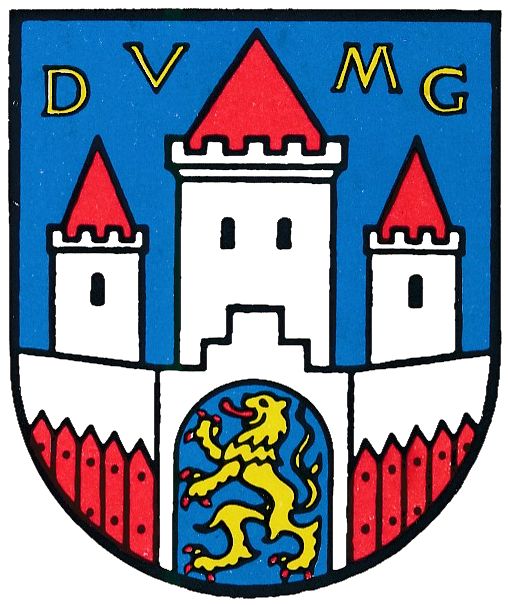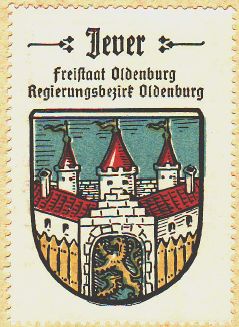Jever: Difference between revisions
Jump to navigation
Jump to search
Knorrepoes (talk | contribs) No edit summary |
Knorrepoes (talk | contribs) m (Text replace - "|width="15%"|50 px|right |}" to "|width="15%"|50 px|right |}<seo title="Wappen, Gemeindewappen" />") |
||
| Line 3: | Line 3: | ||
|width="70%" align="center" |'''Heraldry of the World<br/>Civic heraldry of [[Germany]] - [[Deutsche Wappen|Deutsche Wappen (Gemeindewappen/Kreiswappen)]]''' | |width="70%" align="center" |'''Heraldry of the World<br/>Civic heraldry of [[Germany]] - [[Deutsche Wappen|Deutsche Wappen (Gemeindewappen/Kreiswappen)]]''' | ||
|width="15%"|[[File:Germany.jpg|50 px|right]] | |width="15%"|[[File:Germany.jpg|50 px|right]] | ||
|} | |}<seo title="Wappen, Gemeindewappen" /> | ||
'''JEVER''' | '''JEVER''' | ||
Revision as of 17:37, 5 November 2012
| Heraldry of the World Civic heraldry of Germany - Deutsche Wappen (Gemeindewappen/Kreiswappen) |
JEVER
State : Niedersachsen
District (Kreis) : Friesland
Additions : 1972 Cleverns-Sandel
Official blazon
Origin/meaning
The oldest seal of Jever dates from 1347 and shows the patron saint, St. Cyriacus. The present arms are based on the seal made in 1572, at the same time when the city rights were confirmed.
The arms show a city wall with three towers, with in the gate a lion. The lion is derived from the arms of the Ostring family, who ruled the city until 1583. The letters DVMG stand for Dorch Vroichen Maria Gnade, which means By favour of Lady Mary, referring to Maria Ostring, who confirmed the city rights.
In the 1930s Hupp showed the arms without the letters and with a slightly different design :
| The arms in the Kaffee Hag albums +/- 1925 |
Literature : Stadler,1964-1971, 8 volumes;


